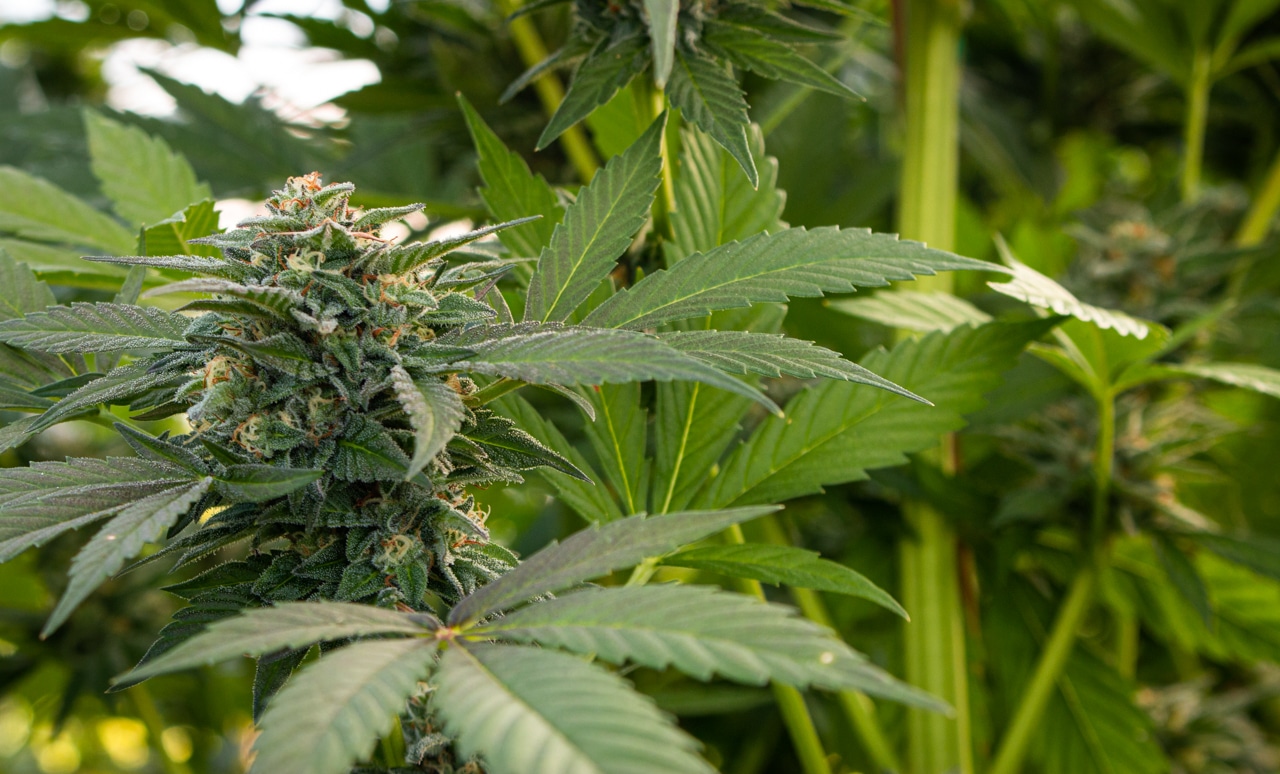![[Denver Post] Oklahoma is the new “Wild West of weed” — and Colorado marijuana entrepreneurs are helping fuel the green rush](https://therealdirt.com/wp-content/uploads/2021/08/TDP-L-Oklahoma-cannabis-RJS-31799.jpeg)
by The Real Dirt | Aug 16, 2021 | 420 Culture & Travel, Blog, Business, Cannabis Business, Cannabis Law, Cannabis Law and Compliance, Culture, Denver Post, Growing, Industry News, Legalization, Medical Marijuana
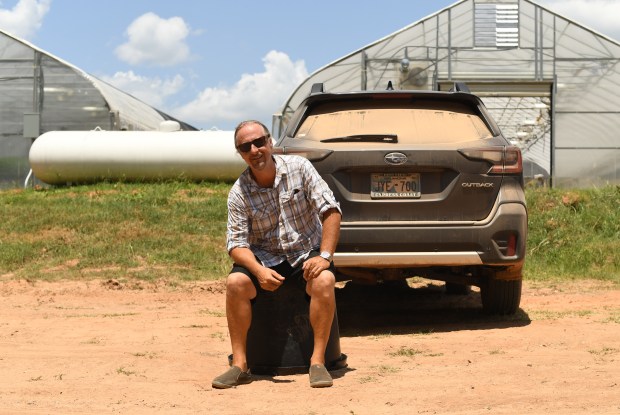
Lax regulation and low barriers to entry have triggered cannabis’s explosive growth in Sooner State
OKEMAH, Okla. — Chip Baker surveyed a vast field on the outskirts of an old hay farm an hour east of Oklahoma City, his ponytail waving in the thick, humid air, his voice growing excited.
“This is probably the largest collection of Squirt in the world!” he boasted, pointing to an array of neatly plotted cannabis plants before him that will soon flower pounds of the popular strain.
Baker would know. From the time he planted his first marijuana plant at 13, he’s been all about growing weed. A dream formed in the Georgia fields took him to Humboldt County, California — the nation’s earliest pot epicenter — then Colorado, the country’s first recreational market.
But it’s here in rural Oklahoma, down a dusty dirt road along the banks of the North Canadian River, where true cannabis cowboys — including droves of Colorado entrepreneurs like Baker — are buying mammoth properties to grow mammoth numbers of plants, all in a quest for mammoth stacks of kush-derived cash.
It’s a place unlike virtually any other in America.
“Other states grow patches,” Baker said with a grin, taking in the 90-acre, 40,000-plant cannabis farm before him. “In Oklahoma, we grow fields.”
The Sooner State, as deeply red as the American political palette will go, has almost overnight become the hottest place in the country to grow marijuana. It’s an unprecedented look at what happens when the government stays largely out of the picture and lets the free market run wild.
And Colorado businesses are pumping their sizeable dollars and cannabis expertise into the state, hoping to cash in on what Baker and others in the industry call the next green rush.
“It’s the Wild West of weed,” he said, “in all its glory.”
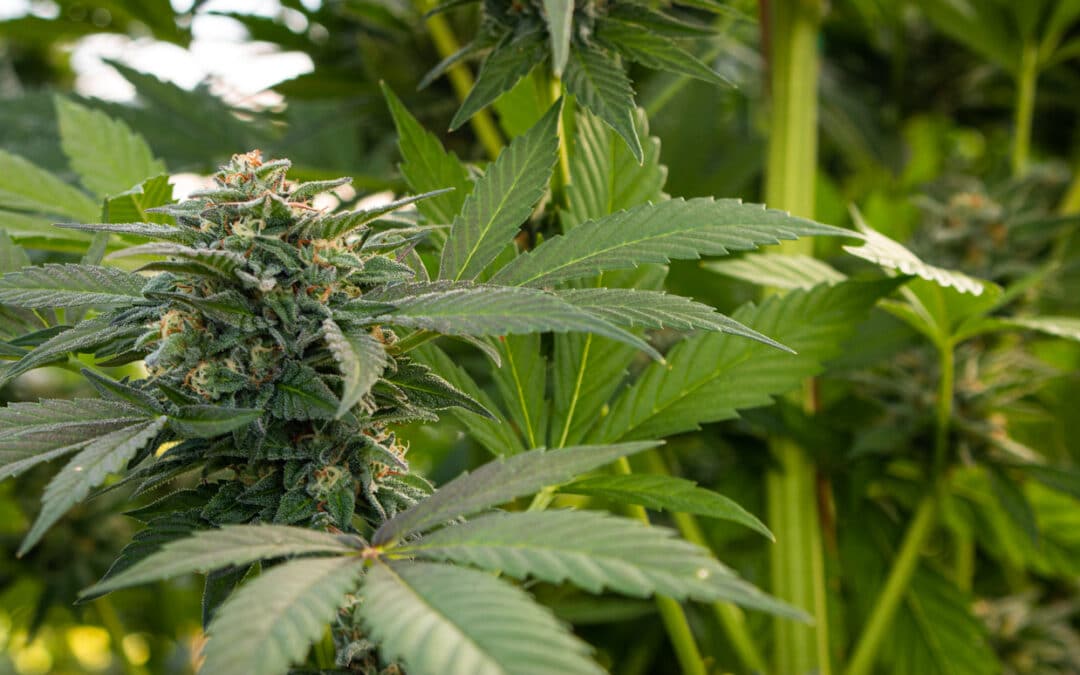
by The Real Dirt | Aug 11, 2021 | Blog, Cannabis Business, Cannabis News, Industry News, Legalization
Maine’s recreational cannabis sales continued to soar in July, reaching a new high and more than doubling their growth pace.
Sales of cannabis for recreational, adult use hit $9.43 million, up 45% from June’s record total of $6.47 million. More than 124,000 purchases took place over the month of July, raking in $943,480 in sales tax, according to data from the Maine Office of Marijuana Policy.
“These numbers demonstrate that, as access improves, more consumers are choosing the tested, tracked, and well-regulated market over a longstanding illicit market,” OMP spokesman David Heidrich told Mainebiz.
“With that said, anecdotally, it would appear as though the natural growth of this new industry, the Independence Day holiday, and summer tourism have all contributed to the robust sales growth witnessed in July.”
Maine’s recreational adult-use industry has continued to grow from its first month of sales in October 2020 of approximately $1.4 million with only six active licensees, according to OMP. June’s record sales of $5.36 million were up nearly 21% from May, and May’s were up 23% from the previous month.
To date the industry has brought in a total of more than $38.6 million and over $3.8 million in taxes in less than a year.
With more and more applicants applying for licenses, the trend looks likely to continue. There are currently 46 licensed retail stores in the state, and another 194 in the process of getting licensed.
There are 43 licensed facilities actively cultivating cannabis and another 183 in process. Sixteen of those are certified to produce “clean cannabis” from the Maine Organic Farmers and Gardeners Association.

by The Real Dirt | Aug 10, 2021 | 420 News, Blog, Business, Cannabis Business, Cannabis News, Culture, Industry News
In a historic year for Washington companies going public, Seattle-based Leafly, an online cannabis marketplace, will push the 2021 total even higher.
The company announced Monday it will go public through a special merger with New York-based Merida Merger Corp (Nasdaq: MCMJ). The transaction is expected to value Leafly at $385 million and add approximately $161 million of additional proceeds to the company.
The combined company will adopt Leafly’s name, and is expected to trade on Nasdaq with the ticker symbol “LFLY.” The company said it will list its shares once the merger is complete, likely sometime this fall.
According to PitchBook, 15 companies in Washington have gone public in 2021 so far, five more than last year’s total, and the most the state has seen in the last five years.
“Online retail shopping is in our DNA,” said Yoko Miyashita, CEO of Leafly, in an interview. “What you see is … this realization from consumers that say ‘Oh, (cannabis) is like any other retail product I can order online.”
Leafly earned $36 million in revenue last year, up from $30 million in 2019, according to its investor presentation. This year, revenue is expected to increase to $43 million, and grow roughly 50% annually through 2024.
Still, the company does not expect to be profitable until 2024, predicting it will lose at least $15 million in net income from 2021 to 2023.
The company makes money mostly through subscription fees it charges cannabis retailers who list their menus on Leafly’s platform. Customers place orders with retailers through the online site, but still have to go to the cannabis shop in person to pick up their product. Leafly does not take a commission from each transaction but does make money off ad sales from retailers.
The company said it has 4,600 paying retail subscribers, with approximately 55% of North American retail cannabis licensees on its platform and 125 million annual visitors.
Miyashita said cannabis retailers are “constrained” in their ability to advertise on major social media networks because of federal prohibition laws. Leafly’s platform, giving retailers and consumers an opportunity to reach each other, is “huge,” she said. “We have one of the largest audiences in cannabis.”
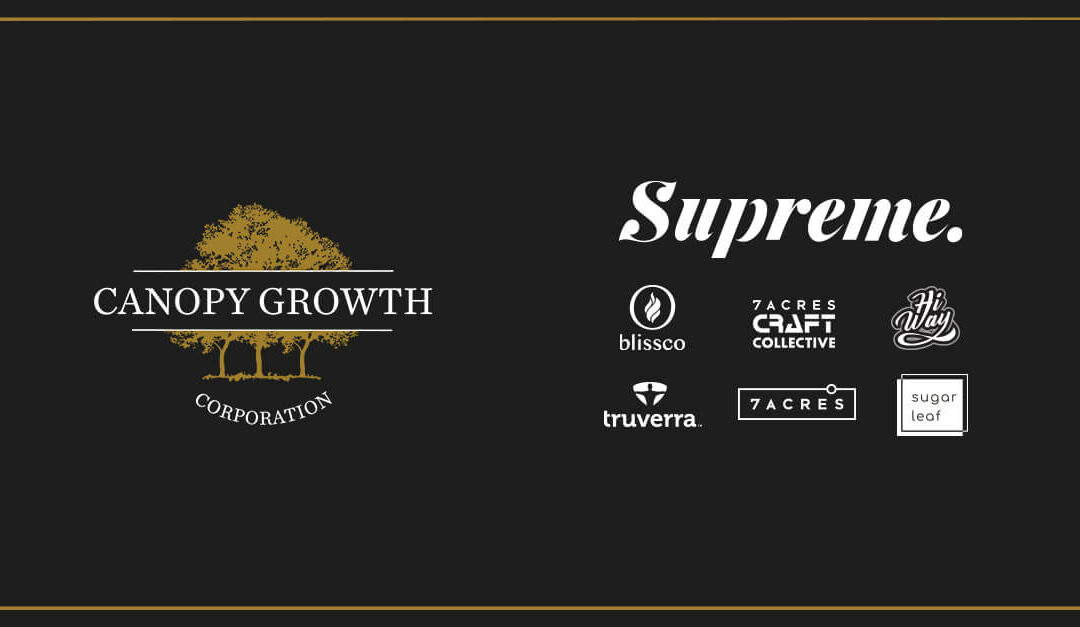
by The Real Dirt | Aug 4, 2021 | Blog, Business, Cannabis Business, Cannabis News, Industry News
Executives for cannabis producer Canopy Growth received more than 4 million Canadian dollars ($3.2 million) in cash bonuses after making “solid progress in the year,” according to a regulatory filing, even as the company lost CA$1.7 billion and laid off hundreds of workers.
The Smiths Falls, Ontario-based company disclosed the executive compensation figures for fiscal year 2021 in a proxy statement sent ahead of its annual general meeting, scheduled for Sept. 14 via webcast.
The executives’ compensation packages consist of salary as well as bonuses awarded as part of the company’s short- and long-term incentive plans. For fiscal 2021, which ended March 31, the board approved short-term incentive plan bonuses totaling CA$4 million for five of the company’s top executives.
The company’s long-term incentive-plan (LTI) bonuses, typically granted annually in March, were awarded June 9, 2021. The LTI bonuses were not reported in the total compensation table because they were issued after the fiscal year ended.
“On a go forward basis, we have determined to fix the regular timing of our annual LTI grants to occur in June of each year, beginning in Fiscal 2022,” the proxy noted.
“As such, no LTI awards were granted in Fiscal 2021, with the prior LTI grants having been made in late March 2020 at the end of Fiscal 2020.”
In an emailed statement, a company spokesperson told MJBizDaily that “Canopy Growth’s executive compensation supports our strategy of attracting and retaining top talent that is necessary to support the company’s ambitious growth plans and is structured to ensure close alignment between the interest of shareholders and leadership.”
Bonuses
The company uses four performance measures related to corporate objectives to help guide short-term bonus payouts where executives earn an annual cash bonus.
Free cash flow has the heaviest weighting (50%) among the performance measures, followed by net revenue (20%), adjusted EBITDA (20%) and individualized objectives (10%).
The company failed to meet its fiscal 2021 goals for net revenue and adjusted EBITDA, but the goals for free cash flow and individualized objectives were achieved.
According to the proxy, Canopy aimed for net revenue of $455 million but came in at $414 million.
Free cash flow was negative $478 million, or half the shortfall the company anticipated.
Adjusted EBITDA, which serves as a measure of profitability, came in at negative $258 million, a slightly worse performance compared with the company’s objective of negative $246 million.
Canopy’s short-term cash bonuses amounted to:
- CA$2.2 million for David Klein, CEO.
- CA$579,000 for Mike Lee, chief financial officer.
- CA$659,000 for Rade Kovacevic, president and chief product officer.
- CA$360,000 for Julious Grant, chief commercial officer.
- CA$351,000 for Phil Shaer, chief legal officer.
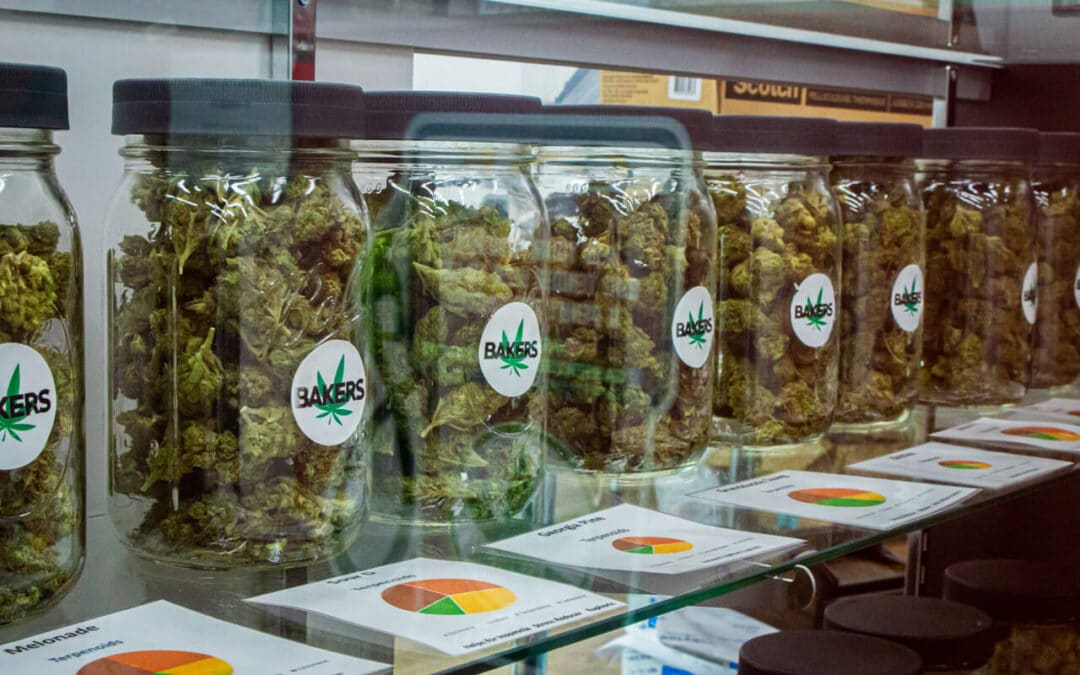
by The Real Dirt | Jul 30, 2021 | Blog, Business, Cannabis Business, Cannabis Law, Cannabis Law and Compliance, Culture, Industry News, Legalization, Medical Marijuana
In addition to THC limits, some states are likely to adopt potency-related taxes.
Many states have already established or are planning to establish new laws for the legal cannabis industry based on the level of tetrahydrocannabinol (THC) in products.
In 2020, Illinois imposed a potency-related tax for all marijuana sales, followed by New York this past March. According to ABC News, Vermont plans to limit the amount of THC in products when the state opens up its legal cannabis market in 2022, with the percentage of THC in any amount of recreational pot set at 30% for flower-form marijuana and 60% for concentrates.
Virginia’s new legalization law aims to give the state’s future Cannabis Control Authority the power to establish THC limits in recreational products and put a cap on THC in medical marijuana. Currently, in states where it’s legal, marijuana is taxed on the established sale price or weight. But with the new laws in Illinois and New York, more states are likely to follow their lead and adopt potency-related taxes on recreational sales.
‘Recriminalization’ at play?
While these changes in state laws are aimed at discouraging the production and sale of highly concentrated cannabis products, the idea of calculating taxes based on potency is getting some pushback. According to the National Organization for the Reform of Marijuana Laws (NORML), this is a type of “recriminalization” of sorts. “[The] consumer demand for [high-potency] [cannabis] products is not going to go away, and recriminalizing them will only push this consumer base to seek out similar products in the unregulated illicit market,” said Paul Armentano, deputy director of NORML.
According to the United Nations Office on Drugs and Crime’s World Drug Report 2021, cannabis potency has quadrupled over the past two decades, while the percentage of adolescents who perceived the drug as harmful fell by as much as 40%.
Clearly, many states are taking this increase in cannabis potency as a serious issue. In fact, some states have already begun limiting the amount of THC milligrams contained in a single serving and packaged cannabis products, while others have prohibited the use of high-potency cannabis altogether. Whether these practices help effectively reduce the production, sale or harmful use of products containing high THC levels remains to be seen.
![[Denver Post] Oklahoma is the new “Wild West of weed” — and Colorado marijuana entrepreneurs are helping fuel the green rush](https://therealdirt.com/wp-content/uploads/2021/08/TDP-L-Oklahoma-cannabis-RJS-31799.jpeg)


